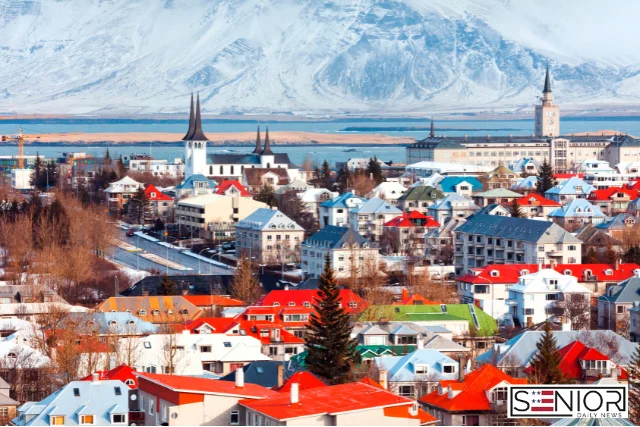The Intersection of Aging and Environmental Sustainability

As global populations continue to age and environmental concerns mount, an unexpected yet powerful connection has emerged: the intersection of aging and environmental sustainability. Far from being passive bystanders in the climate conversation, older adults are uniquely positioned to contribute to and benefit from sustainable practices.
Whether through wisdom gained over a lifetime, resource-conscious habits, or community leadership, seniors have the potential to be champions of environmental change. At the same time, sustainability efforts must also consider the needs and vulnerabilities of an aging population. In this article, we explore how aging and sustainability influence one another—and how both individuals and societies can act at this important crossroads.
Aging Populations: A Global Reality
According to the World Health Organization, by 2050, the number of people aged 60 years and older will double to over 2 billion. This demographic shift affects everything—from healthcare and housing to transportation and food systems.
As people live longer, it’s essential to design systems and environments that are not only age-friendly but also ecologically sustainable. The decisions we make today around urban planning, waste reduction, renewable energy, and transportation must account for older adults—both as participants and as beneficiaries.
How Older Adults Contribute to Environmental Sustainability
1. Lifelong Habits of Conservation
Many seniors were raised during eras where frugality and resourcefulness were daily necessities. They tend to:
- Reuse and repair items rather than discard them
- Minimize food waste
- Prefer local shopping over excessive consumption
These habits align perfectly with the modern sustainability movement, showing that the “old ways” often support new green goals.
2. Volunteerism and Advocacy
Retirees have more time to volunteer and get involved in community causes. Many:
- Support local environmental groups
- Participate in clean-up efforts, tree planting, or climate marches
- Advocate for sustainable policies in their cities or retirement communities
3. Support for Green Consumerism
Older adults may have more discretionary income than younger individuals, allowing them to support eco-friendly brands, renewable energy sources, or green home upgrades.
Why Sustainability Must Prioritize Seniors
Sustainability initiatives are often designed with younger, mobile individuals in mind. However, aging populations face specific needs that must be addressed:
1. Mobility and Transportation
Eco-friendly cities need accessible public transportation and safe, walkable paths suitable for seniors with mobility challenges.
2. Energy-Efficient Homes for Aging in Place
Older adults often live on fixed incomes and may struggle with heating or cooling bills. Sustainable housing that’s also energy-efficient and senior-accessible helps reduce environmental impact and financial stress.
3. Climate Resilience and Health
Seniors are especially vulnerable to extreme weather—heatwaves, cold snaps, and poor air quality. Sustainability plans must integrate public health safeguards for older adults.
Environmental Risks that Disproportionately Affect Older Adults
| Risk Factor | Impact on Seniors | Sustainable Solutions |
|---|---|---|
| Heatwaves | Increased risk of dehydration, heatstroke | Green spaces, cool zones in urban areas |
| Poor Air Quality | Respiratory issues, reduced mobility | Tree planting, low-emission transport |
| Energy Inefficiency | High utility bills, home discomfort | Insulated housing, solar subsidies |
| Lack of Public Transport | Social isolation, dependence on cars | Accessible, eco-friendly transit systems |
| Food Insecurity | Limited access to fresh, local food | Urban gardens, senior-focused food programs |
Programs That Support Both Aging and Sustainability
1. Age-Friendly Cities Initiative
Launched by the WHO, this global movement aims to integrate age-friendly infrastructure into urban planning. Many of its goals—such as improved transportation, housing, and community support—align closely with environmental sustainability.
2. Intergenerational Environmental Programs
Programs that connect youth and seniors through environmental action foster:
- Mutual learning
- Community engagement
- Shared responsibility for the future
Examples include garden co-ops, neighborhood clean-ups, and sustainability education.
3. Green Retirement Communities
Some senior living centers are taking sustainability seriously by:
- Installing solar panels
- Offering recycling and composting
- Using eco-conscious construction materials
- Promoting zero-waste events and green transportation
Tips for Seniors to Live More Sustainably
Even small daily changes can contribute to a greener future. Here are practical steps seniors can take:
- Engage in lifelong learning: Attend community classes or webinars on sustainability.
- Buy local: Support farmers’ markets and reduce food miles.
- Downsize responsibly: Donate or recycle items rather than sending them to landfills.
- Use energy-efficient appliances: Look for ENERGY STAR ratings when replacing household items.
- Opt for reusable items: Cloth bags, water bottles, and washable containers.
How Caregivers and Families Can Support Green Aging
Families and caregivers play a crucial role in helping older adults adopt and maintain sustainable habits:
- Choose eco-friendly transportation when assisting with errands
- Help implement smart home technology to reduce energy use
- Support seniors in setting up gardens or compost bins
- Encourage participation in local environmental events or clubs
FAQs
Q: Can older adults really make a difference in sustainability efforts?
A: Absolutely. Their experiences, habits, and community involvement give them a unique and valuable role in shaping a sustainable future.
Q: Are sustainable homes more expensive for seniors?
A: While some eco-friendly upgrades may have upfront costs, they often result in long-term savings and increased comfort.
Q: What are easy first steps for seniors wanting to go green?
A: Start with small habits like reducing single-use plastics, improving recycling, and shopping locally.
Q: Are there programs that help low-income seniors adopt green practices?
A: Yes, many utility companies and nonprofits offer assistance with energy audits, appliance upgrades, and home weatherization.
Q: How does climate change impact senior health?
A: Seniors are more vulnerable to extreme weather events, poor air quality, and food insecurity—all issues worsened by climate change.
Image Designed Using Canva






